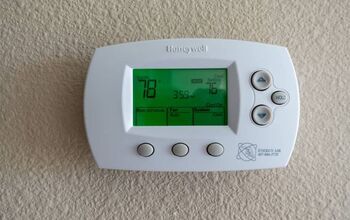End-Of-Season Pool Maintenance Checklist

As days shorten and temperatures continue to drop, there eventually comes a point when it’s time to shut down your pool, put a cover on it, and prepare for winter. Shutting down your pool is often a sad time, as it means you likely need to wait several months before you can take a refreshing dip in your backyard. Maintaining and preparing your pool in the fall, however, is an essential process to ensure your pool functions and looks great for years to come.
At the end of pool season, scrub down all your pool’s surfaces. Make sure you remove all visible stains, repair any small problems, and skim out any debris. Lower the water level of your pool, and add chlorine shock to reduce the risk of bacteria growth. Empty all water from your pumps and filters, and cover your pool. Remember to secure and properly store pool furniture and equipment.
Pool maintenance might not be the most fun you’ll have on your pool deck, but it’s important. Creating a thorough maintenance checklist is a great way to ensure you don’t forget anything. It also helps you rest easy knowing your pool will look and function great as soon as the weather warms up. Keep reading for our complete end-of-season pool maintenance checklist.
The Complete End-Of-Season Pool Maintenance Checklist
1. Scrub Down The Pool Surfaces
The first step in end-of-season pool maintenance is cleaning. Take the time to thoroughly scrub all the surfaces of your pool. Use a pool vacuum, as well as some elbow grease to remove all the buildup that has collected.
As you scrub the surfaces, take note of any stains or issues. In future steps, you will need to address these. For now, however, focus on cleaning.
2. Remove Stains And Add Stain Prevention
Pool stains are unlikely to disappear on their own. Instead, they will probably get worse and more difficult to remove as time goes on. As you notice stains, scrub them off, or add the correct stain remover to eliminate them. Remember, rust stains should be treated differently than other stains.
Add a stain-prevention substance to your pool to prevent any new stains from forming in the off-season.
3. Fix Any Problems You Find
If any small issues need fixing, then fall is the time to do so. Don’t let old caulking, missing tile, or cracked areas sit unfixed for the entire winter. The odds are the problem will only get worse, and it will also become more expensive to fix.
Furthermore, it will be a great feeling in the spring knowing your pool is fully functional, rather than having lots of projects to complete before you can swim.
4. Skim Pool And Remove Debris
Once you have cleaned the pool and fixed any issues, it’s time to start cleaning the water. The first step is to skim the pool and remove any debris. Leaving debris in your pool can cause all sorts of problems. It can stain the bottom of your pool, or result in bacteria forming while your pool is closed.
Ensure there is nothing foreign in your pool before you put a cover on it.
5. Add Chlorine Shock
It is always important to keep your pool chemicals balanced. It is even more important to ensure this is the case when you maintain your pool at the end of the season. Adding chlorine shock is not always necessary, but it is a great extra step to ensure your pool water is fresh while you aren’t using it.
Once your water is clean and you are almost ready to shut down the pool, add your shock with chlorine. This will kill any stubborn lingering bacteria, and ensure your water will stay clean while your pool is dormant.
6. Decrease The Water Level
In most cases, you need to partially or completely drain your pool at the end of the season. If you plan to do work on the lower pool, then you may want to drain it completely. You should drain the pool enough so that the water level is below the skimmer door. Different pools (especially above-ground versus an inground pool) have different recommended water levels for the off-season.
7. Remove All Water From Filters And Pumps
Once you lower the water level, you must remember to also remove all the water from your pool pumps and filters. This is particularly important if you live somewhere with freezing temperatures. If you leave water in these pumps and tubes, they can crack the mechanisms, or at the very least, get moldy and clogged.
8. Clean And Store Pool Supplies
Pool supplies aren’t cheap, and you must take good care of them. One way to ensure your pool supplies live a long life and work well for years to come is to store them properly. First, clean them and allow them to dry completely, so they don't grow mold.
Next, store your pool gear in a cool and dry place out of the sun. Try not to leave it outdoors, as the fluctuating and extreme temperatures can damage your plastic equipment.
9. Buy A Pool Cover, And Cover Your Pool
If this is your first time closing down your pool for a prolonged period, then you may need to get a pool cover. Make sure the pool cover fits securely on your pool, and won’t blow away or sink under pressure.
Apply your pool cover after you have completed all the steps above. In particular, ensure the pool water is at its proper level, clean, and free of debris. Make sure the cover is securely shut. If you need to, add additional support to the cover.
Remember, if the pool cover comes off during the off-season, it can mean a lot of extra work, as well as potential damage to the pool itself.
10. Secure Pool Furniture And Store If Possible
In addition to the pool itself, you also need to think about your pool furniture. Pool and patio furniture is expensive, and you want to do all you can to help it last as long as possible. Part of this means preparing it for the colder months.
If possible, store your furniture in an enclosed space, like a garage or shed. If You don’t have that kind of space, then bundle it up, place it on a platform of sorts, and cover it with durable tarps. This will keep it out of the sun and away from the moisture. In turn, it will preserve it better than leaving it out in the elements.
11. Relocate Vulnerable Pool Plants
The last item on the end-of-season pool maintenance checklist has less to do with your pool, and more to do with the plants around it that keep it looking tropical. Many people opt to use plants around the pool that thrive in the summer months but struggle and die in the winter.
If you have any tropical or subtropical plants around your pool area, then you need to relocate them indoors when you shut down your pool for the season. Find an area indoors that gets plenty of light for the best results.
Wrapping Up The End-Of-Season Pool Maintenance Checklist
Having a pool on your property is a great luxury, but it doesn't come without its costs. Pools require upkeep and maintenance, especially when you are closing your pool for the season. At the end of the season, make sure you remove stains, skim out all debris, and thoroughly clean your pool. Fix any issues you notice, so they don’t get worse over the winter. Add chlorine shock to ensure the water is free of bacteria.
Remember to lower the water level, and remove all water from pumps and filters. When you cover the pool, make sure you cover it properly. Store all your pool accessories and furniture in a secure location.
Related Guides:
- How Much Does Pool Maintenance Cost Per Month?
- When Should You Close Your Pool?
- How Often Should You Shock Your Pool?

Tom Gaffey is an expert writer who currently resides in Washington D.C. Tom has a passion for real estate and home improvement writing, as well as travel and lifestyle writing. He lived the last twelve years in Hawaii where he worked closely with luxury resorts and event planners, mastering his knowledge of aesthetics and luxury products. This is where he found his passion for home improvement and a keen interest in DIY projects. Currently, Tom resides in Washington D.C, and also working on his debut fiction novel.
More by Tom Gaffey












![10 Best Electric Pressure Washers – [2022 Reviews & Guide]](https://cdn-fastly.upgradedhome.com/media/2023/07/31/9070600/10-best-electric-pressure-washers-2022-reviews-guide.jpg?size=350x220)








![Cost To Drill A Well [Pricing Per Foot & Cost By State]](https://cdn-fastly.upgradedhome.com/media/2023/07/31/9074980/cost-to-drill-a-well-pricing-per-foot-cost-by-state.jpg?size=350x220)


![12 Washing Machine Brands to Avoid [with Recall Data]](https://cdn-fastly.upgradedhome.com/media/2023/07/31/9075781/12-washing-machine-brands-to-avoid-with-recall-data.jpg?size=350x220)


